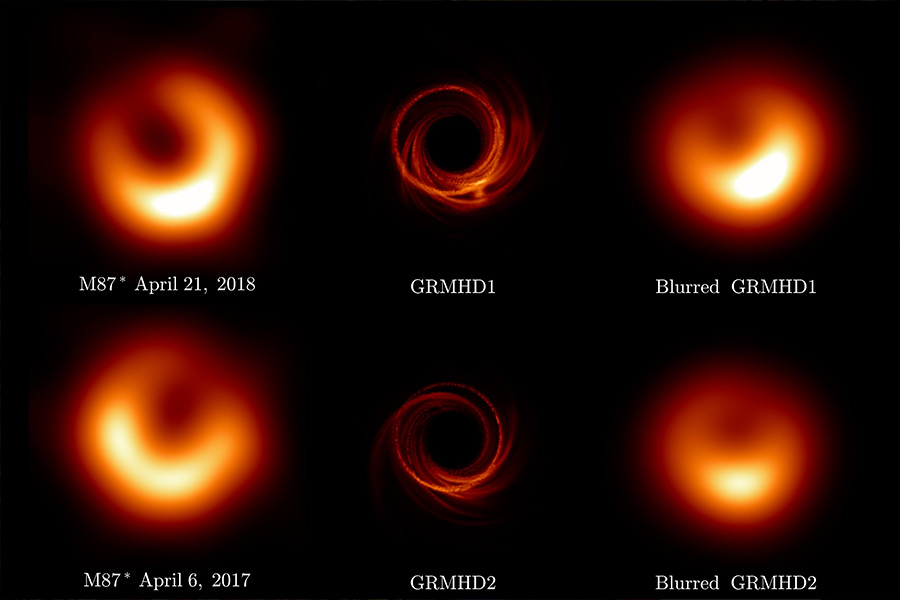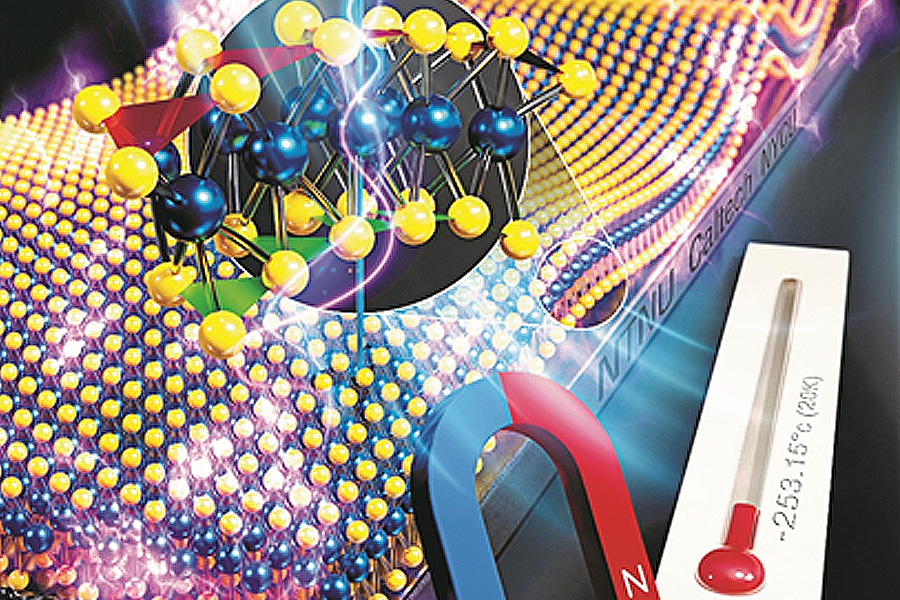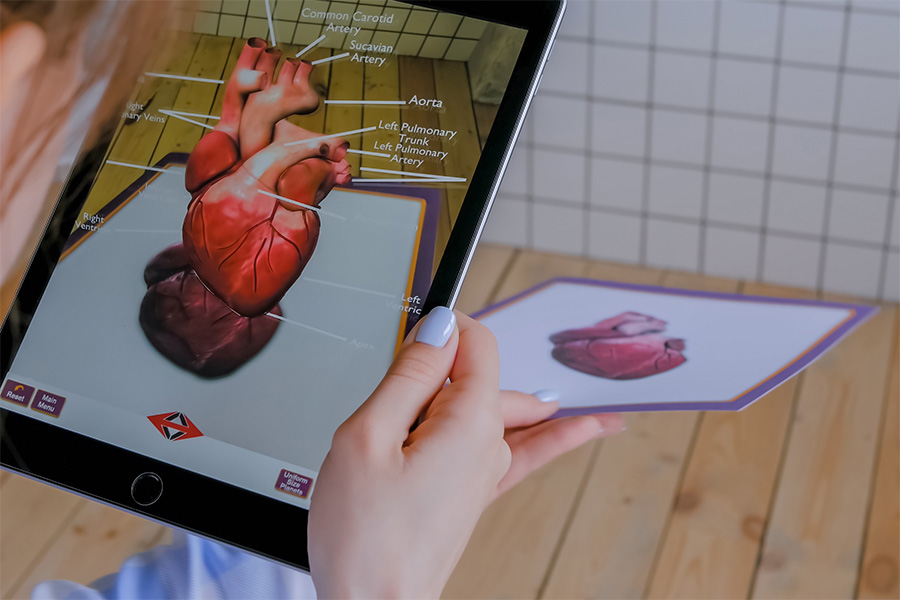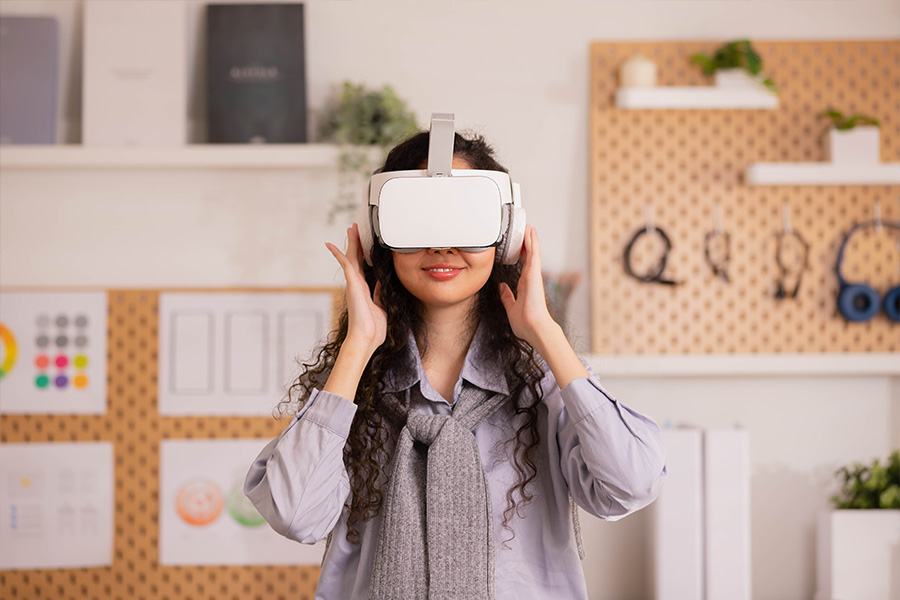The Shifting Shadow of M87*: A New Key to Understanding Black Hole Environments
February 11, 2025
Cover image caption: Comparison of observed and theoretical images of M87*. Left: EHT images of M87* from the 2018 and 2017 campaigns. Middle: Example simulation images at two different times. Right: Simulation images convolved to the observational resolution. (Image credit: EHT Collaboration) Using observations from 2017 and 2018, the Event Horizon Telescope (EHT) Collaboration has deepened our understanding of the supermassive black hole at the center of Messier 87 (M87*). This study opens a new window into multi-year analysis at horizon scales by leveraging a new simulation image library with more than 120,000 additional images compared to the last one. The team confirmed that M87*’s black hole rotational axis points away from Earth, and demonstrated that turbulence within the accretion disk — rotating gas around the black hole — plays an important role in explaining the observed shift in the ring’s brightness peak compared to 2017. The findings, published in Astronomy & Astrophysics, mark a major step forward in unraveling the complex dynamics of black hole environments. Six years after the historic release of the first-ever image of a black hole, the Event Horizon Telescope (EHT) Collaboration unveils a new analysis of the supermassive black hole at the heart of the galaxy M87, known as M87*. This analysis combines observations made in 2017 and 2018, and reveals new insights into the structure and dynamics of plasma near the event horizon. This research represents a significant leap forward in our understanding of the extreme processes governing black holes and their environments, providing fresh theoretical insights into some of the universe's most mysterious phenomena. “The black hole accretion environment is turbulent and dynamic. Since we can treat the 2017 and 2018 observations as independent measurements, we can constrain the black hole’s surroundings with a new perspective,” says Hung-Yi Pu, assistant professor at National Taiwan Normal University. “This work highlights the transformative potential of observing the black hole evolving in time.” The 2018 observations confirm the presence of the luminous ring first captured in 2017, with a diameter of approximately 43 microarcseconds—consistent with theoretical predictions for the shadow of a 6.5-billion-solar-mass black hole. Notably, the brightest region of the ring has shifted 30 degrees counter-clockwise. “The shift in the brightest region is a natural consequence of turbulence in the accretion disk around the black hole,” explains Abhishek Joshi, PhD candidate at the University of Illinois Urbana-Champaign. “In our original theoretical interpretation of the 2017 observations, we predicted that the brightest region would most likely shift in the counterclockwise direction. We are very happy to see that the observations in 2018 confirmed this prediction!” The fact that the ring remains brightest on the bottom tells us a lot about the orientation of the black hole spin. Bidisha Bandyopadhyay, a Postdoctoral Fellow from Universidad de Concepción adds: “The location of the brightest region in 2018 also reinforces our previous interpretation of the black hole’s orientation from the 2017 observations: the black hole’s rotational axis is pointing away from Earth!” Using a newly developed and extensive library of super-computer-generated images — three times larger than the library used for interpreting the 2017 observations — the team evaluated accretion models with data from both the 2017 and 2018 observations. “When gas spirals into a black hole, it can either flow in the same direction the black hole is rotating, or in the opposite direction. We found that the latter case is more likely to match the multi-year observations thanks to their relatively higher turbulent variability,” explains León Sosapanta Salas, a PhD candidate at the University of Amsterdam. “Analysis of the EHT data for M87 from later years (2021 and 2022) is already underway and promises to provide even more robust statistical constraints and deeper insights into the nature of the turbulent flow surrounding the black hole of M87.” The new simulation library developed for this analysis was also more diverse than the one used to analyze just the 2017 data, including additional simulations designed to better model the electron energy distributions and investigate tilted accretion disks. “The first set of EHT papers energized the simulation community, and kickstarted the development of a huge number of new, state-of-the-art simulations,” said Britton Jeter, a postdoctoral fellow at Academia Sinica Institute of Astronomy and Astrophysics. “This is the first opportunity we’ve had to include some of those new simulations, and some match the data quite well, and others not so much. We expect that these new comparisons will push the simulators to develop even better models, and I am excited to see what they produce.” More Information: The EHT collaboration involves more than 400 researchers from Africa, Asia, Europe, and North and South America. The international collaboration is working to capture the most detailed black hole images ever obtained by creating a virtual Earth-sized telescope. Supported by considerable international investment, the EHT links existing telescopes using novel systems, creating a fundamentally new instrument with the highest angular resolving power that has yet to be achieved. The individual telescopes involved are ALMA, APEX, the IRAM 30-meter Telescope, the IRAM NOEMA Observatory, the James Clerk Maxwell Telescope (JCMT), the Large Millimeter Telescope (LMT), the Submillimeter Array (SMA), the Submillimeter Telescope (SMT), the South Pole Telescope (SPT), the Kitt Peak Telescope, and the Greenland Telescope (GLT). Data were correlated at the Max-Planck-Institut für Radioastronomie (MPIfR) and MIT Haystack Observatory. The postprocessing was done within the collaboration by an international team at different institutions. The EHT consortium consists of 13 stakeholder institutes: the Academia Sinica Institute of Astronomy and Astrophysics, the University of Arizona, the University of Chicago, the East Asian Observatory, Goethe University Frankfurt, Institut de Radioastronomie Millimétrique, Large Millimeter Telescope, Max Planck Institute for Radio Astronomy, MIT Haystack Observatory, National Astronomical Observatory of Japan, Perimeter Institute for Theoretical Physics, Radboud University, and the Smithsonian Astrophysical Observatory. (This article was provided by The Center of Public Affairs.) This research was presented in a paper "The persistent shadow of the supermassive black hole of M87 II. Model comparisons and theoretical interpretations" by The Event Horizon Telescope Collaboration, Astronomy & Astrophysics, January 22, 2025 DOI: https://www.aanda.org/10.1051/0004-6361/202451296










